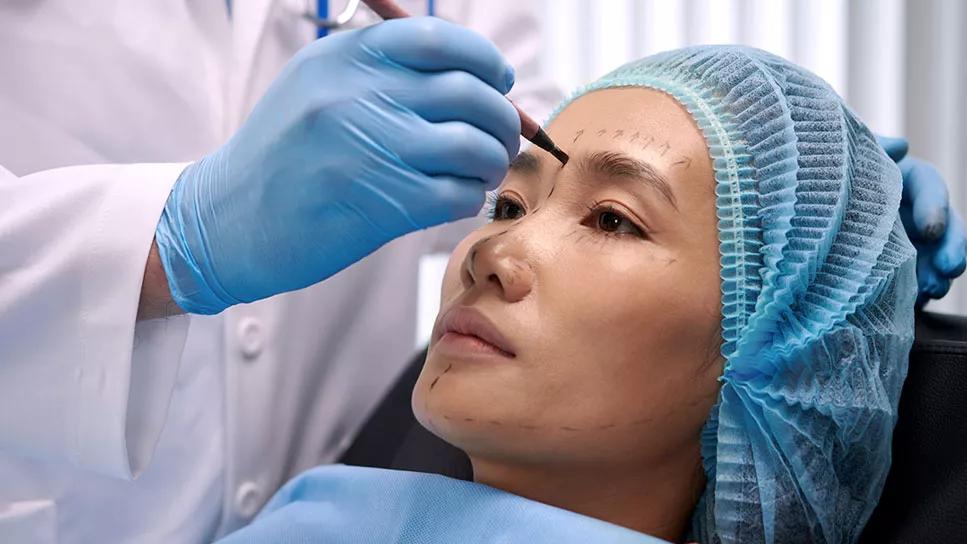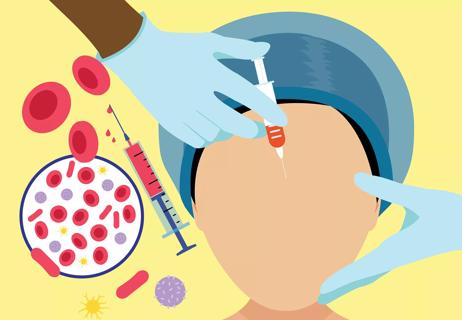From the best age to get one to how long it takes to recover, we answer nine common questions about this wrinkle-reducing procedure

If you’ve looked in the mirror and started thinking about getting a facelift … well, you’ve probably got a few questions. Are you a good candidate for cosmetic surgery? Does it hurt? Will those wrinkles come back?
Advertisement
Cleveland Clinic is a non-profit academic medical center. Advertising on our site helps support our mission. We do not endorse non-Cleveland Clinic products or services. Policy
Let’s get answers to those questions and more from plastic and reconstructive surgeon James Zins, MD.
A facelift is a cosmetic surgery designed to turn back the clock on your appearance. The procedure can smooth wrinkles and creases and “lift” droopy skin that has started to sag over time.
The surgery typically involves making incisions at key points on your face (such as near your ears and under your chin) so skin can be pulled and tightened. Fat also may be removed during the process. Muscles and tissue beneath the skin may be addressed, too.
But that’s the basic explanation as to what takes place. Now, let’s dig in deeper for what you really want to know.
Nothing lasts forever — and that includes the youthful results of a facelift. The good news, though? The smoother skin left by a facelift procedure can last up to 10 years for some people.
The staying power of that wrinkle-free look depends upon the condition of your skin at the time of your facelift: “Results last longer if your skin is relatively elastic when you have the surgery,” explains Dr. Zins.
A skin’s elasticity refers to its ability to snap back into shape after being stretched out. As you might imagine, older skin typically has less “snap” to it, which explains the formation of wrinkles in the first place.
Advertisement
That also explains why younger people (say age 50 instead of 70) typically get a few more years out of their facelifts.
“The sooner the procedure is done once aging has occurred the longer lasting and more natural it tends to be,” says Dr. Zins. “The recurrence of facial aging or wrinkles will occur much, much sooner in someone who is older.”
But know this: No facelift is a permanent victory over your skin’s natural aging process.
As mentioned, early treatment can have a more lasting effect, but there’s no right or wrong age for a facelift once wrinkles start appearing. (Those changes typically appear in your 40s or 50s.)
The average age of people who come in for the procedure is typically late 50s to early 60s, says Dr. Zins. But people also can be in their 40s or well into their 80s.
The surgery can be safe at any age, states Dr. Zins, but make sure to get screened by your surgeon or healthcare provider ahead of the procedure to avoid any potential complications.
There are many reasons why folks want to erase the wrinkles of time from their face, says Dr. Zins. The most common one involves the reflection they see in the mirror.
“People often tell me that they look in the mirror and don’t recognize the person staring back,” he says. “They see a face that looks sad or tired and they want to know what they can do about it.”
Some also want a more youthful appearance to stay competitive professionally and “look the part” in their chosen career. (“Age discrimination is a reality, whether we want to admit it or not,” says Dr. Zins.)
What should NOT be your reason for a facelift? A desire for a life change amidst emotional or traumatic times (such as after the death of a spouse or significant other).
“A facelift is not going to change your life or who you are or make the world better,” he cautions. “If that’s your driving force, we recommend deferring things until emotional stability is established.”
Coming back for a second facelift a decade after the first is quite common. Some folks even circle back for a third surgery. “But there is a limit,” says Dr. Zins. “You can have too many facelifts.”
Certain physical characteristics offer a better bedrock for a facelift procedure. “Your facial bone structure really is the foundation for any work that we do,” says Dr. Zins. “It’s extremely important.”
An ideal foundation would include:
If the list of traits doesn’t describe how you look above the shoulders, no worries! Implants can be used to enhance a facial foundation and build it up for better surgical results.
Advertisement
Odds are you’ll spend the night at home following facelift surgery. “Relatively few patients are being admitted to the hospital after having the procedure,” reports Dr. Zins. “It’s generally not necessary.”
But it is typical to make a return visit to your doctor or surgeon a day or so after a facelift so they can check on your progress and remove bandages.
Surgery requires recovery time — and a facelift IS a surgery. Expect it to take 10 to 14 days for bruising and swelling from a basic facelift to go away. More extensive procedures could take longer.
Know this, too: The first few days after the surgery may be tough. “But everybody usually starts feeling magically better by the afternoon of the third day,” says Dr. Zins.
It’s important to understand that there are potential risks with a facelift. “This is not like getting your nails done,” says Dr. Zins.
Serious bruising (hematoma) is the most common complication following a facelift. In rare cases when the swelling is extreme, a second (and immediate) surgery may be needed to relieve pressure.
Infection, scarring or nerve injuries are also possible but extremely rare.
If you’ve read this far, consider it progress to checking off one item on your to-do list before getting a facelift. “It’s important to do your homework,” stresses Dr. Zins. “Do your research and know what you’re getting into.”
Advertisement
Other key steps involve:
Advertisement
Learn more about our editorial process.
Advertisement

The treatment triggers collagen production by using your own blood

Several conditions, like vitiligo and fungal infection, can cause a loss of pigmentation, leading to white spots or patches on your skin

Moisturizing, running a humidifier and adjusting your showers may help keep itchiness and irritation at bay

‘Zit stickers’ can help heal a new or popped pimple, but they’re limited when it comes to managing acne

Glycolic acid benefits skin tone, texture and pigmentation by exfoliating dead skin

At-home treatments and lifestyle changes may help ease the symptoms and improve the appearance of varicose veins — but they aren’t a cure

Scalp cancers can occur because of long-term sun exposure

Some gentle soap and warm water go a long way when you’re washing these cosmetic tools regularly

Babies can get congested easily, but you can calm their cough by keeping them hydrated, using nasal drops and running a humidifier

Weight loss may cause loose, sagging skin and muscle loss to your rear

Several conditions, like vitiligo and fungal infection, can cause a loss of pigmentation, leading to white spots or patches on your skin